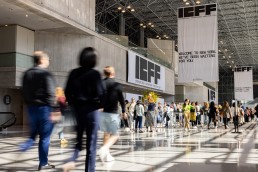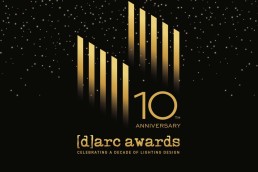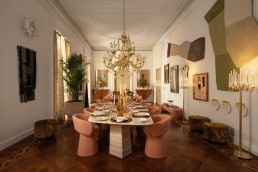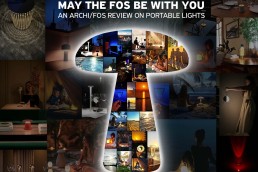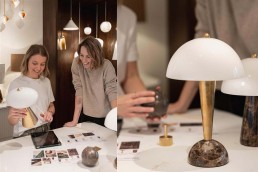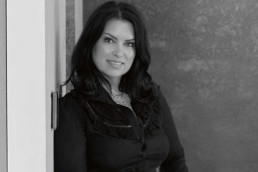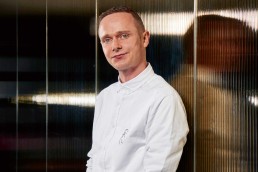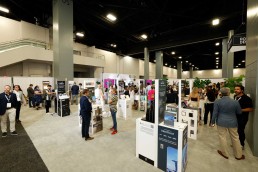One month till ICFF: What to know for lighting
USA)- International Contemporary Furniture Fair (ICFF) returns to New York from 18–20 May at the Javits Center. Embracing the "Designing in Harmony" theme for 2025, emphasising holistic and culturally inclusive approaches across product categories, including architectural and decorative lighting.
Among the brands exhibiting lighting are Secto and Woud, known for their focus on sustainable materials, minimal aesthetics, and quality craftsmanship. The fair will offer a platform for lighting professionals to engage with next-generation lighting solutions, from sculptural pendants to modular task systems, aligned with eco-conscious practices and inclusive design thinking.
Juniper returns as a key player with the debut of its Multiverse lighting collection, which will activate the new Recharge Lounge at the heart of the fair. The installation merges graphical illumination and functional task lighting with co-working and relaxation zones to demonstrate the evolving role of lighting in shared public and hybrid workspaces. IESNYC and IALD NY are hosting an event in the Juniper lounge on Monday May 19 starting at 3pm to include a short presentation followed by roundtable conversations between lighting and interior designers, followed by a networking and a happy hour.
The ICFF Editors Awards, taking place on Sunday, May 18 at 5:30 PM, will again include a category for Best Lighting, recognising excellence in fixture design, innovation, and materiality. Past winners have reflected growing trends toward modularity, energy efficiency, and artistic expression through light.
Meanwhile, Water Experience x Grohe installation explores how lighting interacts with sustainable kitchen and bath design, offering solutions that are both visually impactful and sustainable. Bespoke Salon, designed by MAWD and presented in partnership with Architectural Digest, will serve as a curated hub showcasing high-end finishes and lighting craftsmanship. This space will offer an intimate setting for lighting designers to explore new materials, textures, and techniques in luxury interiors.
For three days, designers, architects, developers, and buyers will explore the latest in furniture, lighting, seating, textiles, and more. ICFF 2025’s refreshed approach includes a carefully redesigned floor plan, expanded international participation, and dynamic partnerships that underscore the fair’s goal of creating a truly human-centred and globally inclusive event.
For free access use our promo code: DAPMDARC
[d]arc awards throw "decadent-themed" bash
(UK) - [d]arc awards are turning 10, and to celebrate a decade of creativity and innovation in lighting design, [d]arc media and Light Collective are pulling out all the stops for a night like no other. Happening on 24 April 2025, London’s Fireworks Factory in Woolwich will host a dazzling anniversary edition of the famous [d]arc night party.
In honour of the milestone, guests can expect a decadent theme, complete with a strict dress code, a red-carpet arrival, and the world premiere of the [d]arc awards 10th anniversary documentary. That’s in addition to the much-loved installation competition, where stunning light art is created through partnerships between our sponsors and designers.
Over 600 industry professionals are expected to attend, with independent lighting designers making up 90% of the guest list. For those lucky enough to vote in this year’s awards, free tickets should already be in your inbox. If your invite hasn’t arrived, please contact the team at darcawards@darc-media.com to secure your spot.
The event wouldn’t be [d]arc night without the extra flair: guests can enjoy street food, a free bar, a glam bot to capture those red carpet looks, and plenty of opportunities to network in a fun, electric atmosphere.
After a decade of redefining how design awards are celebrated, this year’s [d]arc night is set to break the mould once again. Think less sit-down formal banquet, more immersive yet classy festival — and get ready to toast 10 years of lighting brilliance in true [d]arc style.
We’ll see you under the lights on 24 April in London.
darc MDW highlight: L’Appartamento by Artemest
(Italy) – darc visited the renowned L’Appartamento by Artemest during Milan Design Week.
With so much to see inside Euroluce’s halls this year, it was a welcome break to escape to the city centre and explore some design installations and showrooms along the well-known avenue of lighting, Corso Monforte.
One of the Darc team’s highlights during their trip to Milan was located a short walk from this famous lighting street, L’Appartamento by Artemest.
Celebrating its 10th anniversary at this year’s Milan Design Week, Artemest presented its third edition of L’Appartamento by Artemest. The installation aims to celebrate the world of Italian craftsmanship and design through the lens of globally renowned design studios in an exclusive venue that opened its doors to the public for the first time.
Located at the Palazzo Donizetti, a stunning 19th-century traditional Italian manor house, which was transformed by six interior design studios, using a selection of extraordinary furniture, lighting, home décor and art from Artemest’s finest artisans, brands, and artists.
The designed spaces included The Foyer by Simone Haag, The Reading Room & Studio by Nebras Aljoaib, The Grand Salon by Meyer Davis, The Entertainment Room by 1508 London, The Dining Room by Romanek Design Studio, and The Bedroom by Champalimaud Design.
Delving deeper into the schemes of the team’s favourite spaces in the apartment - the dining area and bedroom – we discover the design concepts and execution.
Firstly, speaking of their design for the bedroom, the team from Champalimaud walk us through the design intentions of their space: “Inspired by the glamour of 1960s Italian film, we sought to create an evocative, sensuous, and playful space where friends meet before a night out and come back to end the evening in magic. In the opulent setting of the L’Appartamento palazzo, we made these spaces into their own kind of party. We envisioned a seductive gathering place to pour drinks before and after the crowds, and an intimate haven for quiet and enchanting moments, all in celebration of La Dolce Vita.

“The vanity room is designed to be fun and effortlessly chic. Anchored by a cylindrical chandelier made of hand-crafted ivory majolica, the space is illuminated above twin rugs with a colour palette blending warm earth tones, with deep terracotta fading into softer hues evoking sunset. The walls are adorned with over-the-top Venetian decorative mirrors and gold- and silver-leaf artworks, to be admired by guests luxuriating on cloudlike sofas accented with surreal painted wood side tables. The spirit is lightened by an ostrich sculpture whose belly opens to reveal a red lacquer bar filled with silver wine glasses and engraved crystal perfume bottles.
“The whimsical, cinematic appeal of the vanity room leads into the elegant and relaxed bedroom where we carry on the palette of reds, creams, and metallic tones. A modernist bed frame is contrasted against a scenic handmade wallcovering of citrus trees in shades of green and yellow. A flowing natural linen bed cover drops to the deep red rug beneath, and friends can lounge around on the sinuous sofa of wrinkled vibrant orange velvet, legs kicked up on a sculptural silver-coated stool. In the corner, a chair painted like Italian marble plays on its light wooden construction, contrasting the monumental with the minimalist. Adding a moment of slow sophistication to the spaces, we turned the bedroom terrace into an elegant study complete with a green lacquer desk and ethereal three-dimensional artworks which evoke a distinctly Italian allure.”

Secondly, Brigette Romanek of Romanek Design Studio discusses their concept for the dining area: “I am in love...in love with the grandeur of the room. The height of the ceiling, the original parquet flooring, and, of course, the light that pours in through the large windows create a breathtaking ambience. It all brings about a feeling of being welcomed into a special sanctuary, a place where time slows down, and life feels a bit more magical.
“In my own way, I wanted to meet this grandeur with a sense of uniqueness and calm, a space where one can finally exhale and truly relax. What I mean by that is to transform a room that initially feels overwhelming into one of serene beauty - a room designed to be enjoyed and lived in, not just admired from a distance.
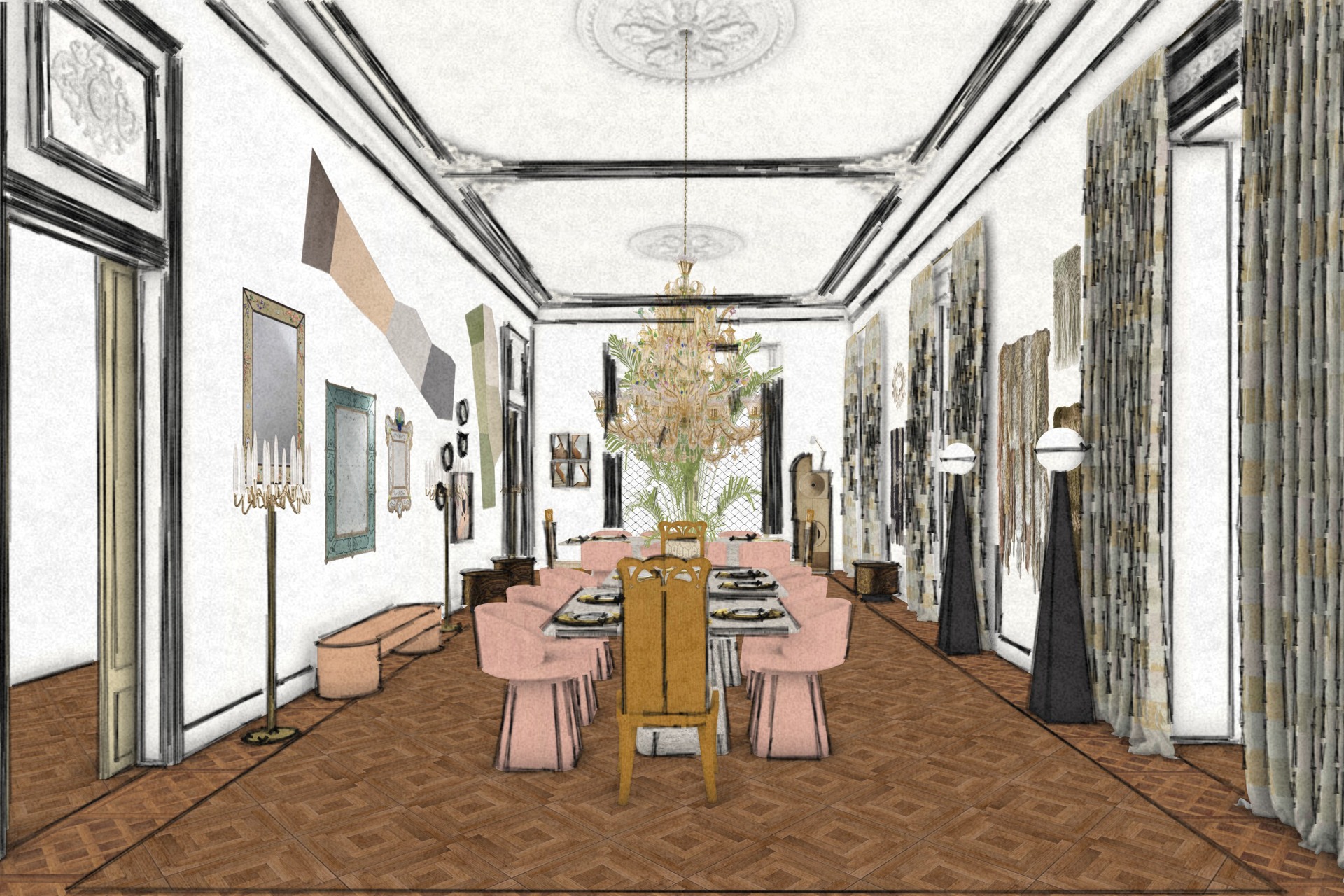
“The pleasure of sharing a beautiful meal, surrounded by wonderful company in a stunning room, is nothing short of a feast for the senses. It’s an experience that lingers long after the last bite is taken. The eclecticism of the various pieces - different patterns, shapes, and colours - brings such joy! Everywhere your eye lands, there’s something to take in, something to ponder, and elements that expand the mind and ignite the imagination. The colours sing in harmony - creams, pinks, greens, yellows, and golds all dance together, creating an atmosphere that is joyous and inviting.
“The art from different periods and expressions adorns the walls, while mirrors strategically placed reflect the beauty back, adding depth and intrigue to the space. The goal was simple yet profound: to create an environment that expresses happiness, beauty, and joy, where laughter and good times can flourish. This room isn’t just a place; it’s a celebration of life, a canvas for memories waiting to be painted.”
Archifos Launches “May the Fos Be With You”
(Greece) - After months of live testing, styling, and community engagement, Archifos officially launches “May the Fos Be With You”, a comprehensive review of portable lighting. The site is an independent, user-driven, editorial-style review platform dedicated to the beauty, characteristics, and key decision factors of portable lights.
“We didn’t just evaluate specs. We lived with each light! We tested them in real-life environments - on terraces, beaches, picnic tables, dinner tables - and brought back honest, personalised feedback,” says Katia Kolovea, Lighting Designer and founder of Archifos. “This is about empowering designers, hoteliers, and homeowners to find their perfect light match - not by numbers, but by moments.”
The study, led by Kolovea as a personal and professional passion project, is now live at www.maythefos.com. What began as a fascination with the flexibility and vibe-setting power of portable lights evolved into a full exploration campaign to celebrate real-life impact. Visitors can create a free account, explore insights, and get inspired for their decision-making when choosing the right portable light.
Key Features Include:
- Authentic, in-context reviews of cordless lights in real-life environments.
- Creative editorial content exploring atmosphere, styling, and functionality.
- Pros, Cons, and Application Notes based on independent use - not marketing copy.
- All written content is original and produced by the Archifos team and collaborators.
- Visuals include a mix of official brand materials and original Archifos imagery.
“We believe light is not just functional - it’s emotional. Each of these products carries a story, a vibe, and a role to play. This project is here to help people find the one that fits their life,” says Kolovea. “All evaluations are based on independent product testing and firsthand usage. Review insights reflect my personal but professional opinions, informed by years of lighting design experience. Reader perspectives may differ, and that’s part of the conversation. We are open to feedback, questions, suggestions, and dialogue.”
This platform is intended as a creative, educational, and inspirational tool. Users are encouraged to consider their own needs and context when making a purchasing decision.
“May the Fos Be With You” is an ongoing, evolving celebration of cordless lighting, one that welcomes new perspectives, products, and collaborators. As the community grows, so does the collective story of how light enhances emotion, mood, and experience.
Disclaimer: This project is not sponsored, funded, or influenced by any brand. Participating brands responded to a public open call and voluntarily sent their products for review. No fees or sponsorship were exchanged. Archifos retains all luminaires for continued use, testing, and storytelling.
Press & Collaborations: maythefos@archifos.com
Mater and OEO studio collaborate in post-consumer waste collection
(Denmark) – Danish green-tech design brand Mater has launched the Terra Collection, its first lighting series designed in collaboration with Copenhagen-based OEO Studio. The collection is crafted from Matek, Mater’s patented composite material made from post-consumer electronic waste and coffee shell residue.
Matek, originally developed for furniture, blends fibres such as sawdust or coffee shell residue with a binder made from recycled plastics, including e-waste or bioplastics. This results in a mouldable material suitable for lighting design.
OEO Studio selected Matek for its ability to simplify the manufacturing process by integrating elements that typically require additional materials and components, reducing production complexity and costs.
Thomas Lykke, Head of Design and Founding Partner of OEO Studio, stated: “The design draws inspiration from the possibilities offered by Matek. It is minimalist, precise, and timeless. The simple conical form is harmoniously balanced, contrasting beautifully with Matek's tactile quality. This imparts fresh and intriguing expression to the series, setting it apart from what is typically seen in the lighting market.”
The Terra Collection includes a wall lamp (available as hardwired or cordless), a pendant, and a portable lamp. The portable version features three brightness levels and provides up to 10 hours of illumination on a full charge.
Currently, the collection is exclusively distributed in the UK by David Village Lighting in Sheffield. Managing Director James Village commented: “At David Village Lighting, we are committed to curating the most innovative and sustainable lighting solutions for the UK’s design industry. That’s why we’re proud to partner with Mater to be the exclusive UK retailer of the new Terra collection, designed by OEO Studio. We love that Mater has sustainability at the heart of everything it does, and Terra is its first series of lighting crafted out of post-consumer e-waste and coffee shell waste. We feel the Mater Terra collection is the perfect addition to the David Village Lighting catalogue and are delighted to exclusively launch this collection.”
Stay tuned for more! We will be releasing an in depth feature on the Terra Collection for our material feature in issue #61 due to be released in September.
www.materdesign.com
www.oeo.dk
www.davidvillagelighting.co.uk
Heathfield & Co launches first portable range
(UK) – This March, Heathfield & Co opened its debut showroom at Design Centre, Chelsea Harbour, London. Coinciding with its opening, the brand launched its first range of portable lighting, the Selene collection, designed in collaboration with multi-award-winning landscape designer Pollyanna Wilkinson.
To celebrate both launches, the brand hosted an in-person Q&A in the new space between Wilkinson and Heathfield & Co’s Creative Manager Hanna Walter, hosted by Pip Rich, Executive Editor of Living Etc., which darc’s editor Sarah Cullen was invited to.
Spanning 800sqft, the space aims to redefine the traditional showroom experience with a home-from-home concept designed to inspire and engage both interior designers and clients. Drawing on their 40-year history of collaborating with interior designers on residential projects, the showroom has been designed by Heathfield & Co to capture the warmth and functionality of a real home. Thoughtfully divided into key areas - a spacious kitchen island and a relaxed living room - the interior demonstrates how thoughtfully layered lighting can transform a home.
Andrew Watson, Director at Heathfield & Co, says: “This milestone opening is a proud moment for us as a brand. It’s more than a retail space – it’s a destination where design professionals and clients can connect, collaborate, and experience our designs in a truly immersive way.”
Lily Watson, Head of Brand and Marketing, adds: “We’ve always believed that lighting is key to creating a welcoming interior. Our new showroom reflects this, offering a home-from-home experience where lighting, furniture, and thoughtful design work together to create an inviting atmosphere for our clients.”
At the evening event, held during London Design Week, the unveiling of the new Selene collection of portable lights resulted in a packed-out space, with designers and press eager to hear the design journey behind the pieces.
The collection of five lamps set out to reimagine portable lighting with a luxurious, nature-infused aesthetic that draws inspiration from the celestial elegance of the moon. At the heart of it lies a dedication to refined craftsmanship and thoughtful design. Each lamp celebrates Selene, the Greek goddess of the moon, capturing the soft ambient glow and fluidity of lunar light.
The collection is comprised of five products: Carme, Circe, Eos, Nyx, and Thebe created in various pairings of opal glass, Emperador marble, smoked oak, and waxed brass.
After a brief discussion between Rich and Wilkinson on the general design and material trends she is witnessing in current projects (notably rich tones and heavily veined, coloured marble), the conversation turns to the role of lighting in a garden. When asked what is one of the key considerations to take into account when adding lighting to an outdoor space, Wilkinson remarks “less is more”.
“I think the worst thing you can do is light your garden up like Heathrow airport. It should be subtle.” She continues, explaining that outdoor lighting should serve a purpose as wayfinding or to eliminate the black void that many see through the large, glazed glass walls in homes. “We want to be able to give that depth within the garden so that you don't feel like you're staring back at yourself year-round. But it's a subtlety, which is exactly why portable lighting is such a beautiful solution because it's not permanent. And, in terms of wildlife friendliness and flexibility, it’s great because fitted outdoor lighting is expensive.” She also notes the importance of protecting wildlife, which is a priority to look after when designing a garden and to achieve this is with downward facing lights where possible.
Steering to continue the conversation on portable lighting, Rich asks what the benefits are. “I think there's a huge advantage to being able to literally pick up your lamp and take it outside,” says Walter. “I think they're ambient lamps. They've helped to create a tone and a mood, and I think there's something quite cool about being able to transition that tone with you as you move through different spaces, whether that's outside, or inside. And then there are so many interior applications as well, from kitchen islands, shelving systems, and bathrooms.”
Wilkinson adds: “One of the biggest challenges we have with lighting in a garden is on a dining table, there's no elegant solution - a lot of clients want the festoon lights, but if we don't have a structure, which often we don't, you cannot get central lighting. You can do loads of lovely floor-related lighting or walls, but that doesn't solve the issue of when you want to eat dinner.
“So, having something that you can put on a coffee table, on the dining table, take it in and out when you need it, I think it earns its keep a lot more.”
Moving to the design of the Selene collection, Rich asks the pair about the decisions behind the products’ materials and scale. “There were lots of considerations that we hadn't had to think about before,” explains Walter. “We made sure that the scale was right so that it's easy to pick up and carry it around while still wanting to use heavy quality materials that we like to use. We felt that while portables have had a huge 18 months to two years, they're very much tailored towards a more functional look, with the various metal stick and shade shapes. We tried to achieve that balance between the lamp doing what it needs to do and it being a really decorative, beautiful object as well.”
Another consideration the pair had to include in the design journey was the product’s durability. Using their prior knowledge of bathroom lighting, Heathfield & Co ensured the collection was IP44-rated. One of the first design iterations included a matte glass finish, which is in keeping with the brand’s aesthetic. However, when discussing the outdoor settings, not having a rough surface became really important. “It was more about what would feel bright outside, you don't want anything too perfect,” explains Wilkinson. This was also evident in the choice of brass that ages and patinas over time. Wilkinson’s expertise in garden design shaped not only the selection of materials that age gracefully but also the collection’s earthy tones and weathered textures.
Lastly, the sturdiness was key to avoid the pieces being easily knocked over by a gust of wind. “They're really sturdy and very pleasing to carry,” Wilkinson adds.
When it came to choosing names for the collection, Wilkinson took inspiration from Greek mythology. “I'm slightly obsessed with representing women. And then I also love everything witchy! Like moon cycles and herbal things that you can grow. It's my vibe.
“So, when we were talking about the lights, I was thinking about them being outdoors, which led me to moonlight and stars. And then I thought we could go literal and go with planet names or star names, or go feminine with it. We've also got an all-female team here.
“Selene is the Greek goddess of the moon, and each of the lights is named after a Greek mythological character that's had some representation towards something celestial.”
Comment: Manuela Hamilford
Biophilic Lighting: Designing with Nature in Mind. Manuela Hamilford, Founder of Hamilford Design, discusses the importance of creating mindful spaces that have people’s wellbeing at the forefront.
In the evolving landscape of interior design, there is a growing recognition of the importance of creating spaces that do more than just look good - they need to make people feel good too. Biophilic design has been a particularly powerful tool in transforming interiors and is increasingly discussed - it was even the subject of a recent panel discussion I was a part of at last year’s LiGHT 24 exhibition in London. The concept centres around reconnecting people with nature and natural light cycles, which have been shown to positively impact wellbeing, emotions, and sleep patterns. Biophilic lighting enhances both the aesthetic and emotional experience of a space.
When I founded my interior design studio, my goal was always to create spaces that foster wellbeing and happiness. Biophilic design has long been present in interiors, traditionally seen as maximising natural light and incorporating natural materials. However, we are now delving deeper into its psychological aspects. A Human Spaces research report found that biophilic design can improve productivity by 6% and boost creativity by up to 15%. It’s not just about adding a skylight - it’s about thoughtfully integrating lighting in a way that connects a space to the natural world. In our projects, we are reassessing our approach to biophilic lighting, which has become a key element in modern interior design, both residentially and commercially.
At its core, biophilic lighting is about designing with the natural world in mind, creating lightscapes that mimic the rhythms, colours, and qualities of natural light. Natural light plays a vital role in how we experience a space, influencing our mood, energy levels, and even our health. By harnessing the principles of biophilic lighting, we aim to enhance the sense of connection to nature, even when indoors.
One of its key principles is mimicking natural light cycles - incorporating daylight and its changing qualities while using artificial lighting to replicate the warmth, intensity, and colour temperature of natural sunlight. Having grown up in Italy, I am particularly aware of the challenges in a city like London, where natural light can sometimes be scarce. Introducing lighting that mimics outdoor light can significantly improve the experience of a space.
Incorporating biophilic lighting starts with a deep understanding of how light behaves in nature. The first step is to maximise natural light wherever possible - large windows, skylights, and open spaces are crucial in ensuring daylight is used to its full potential. However, natural light cannot always meet the needs of every space, particularly in the evening or in areas lacking direct access to windows.
This is where thoughtful artificial lighting comes into play. We often use a combination of warm, diffuse light to replicate the glow of daylight. Dimmable LED lighting in soft white and amber tones allows us to simulate the natural progression of daylight, from the bright glow of morning sunshine to the gentle hues of evening. The goal is to create an indoor lighting environment that reflects the shifting colours of the outdoors.
Throughout the day, sunlight transitions from warm yellow in the morning to crisp blue at midday, before softening to deep reds in the late afternoon and evening. Blue light, similar to natural skylight, stimulates serotonin production, promoting alertness and focus. As night falls and blue light diminishes, melatonin levels rise, encouraging relaxation and sleep. Striking the right balance between these two hormones can significantly impact sleep quality and overall wellbeing.
Beyond lighting temperature, the quality of light is key. We integrate layers of lighting - ambient, task, and accent lighting - to create a balanced effect that suits the needs of a space. Ambient lighting fills a space with overall illumination, task lighting focuses on specific areas or functions, and accent lighting highlights particular features or artworks.
We incorporate biophilic lighting into a wide range of projects, from luxury residential homes to commercial spaces. Each project provides an opportunity to explore how light can transform a space and evoke a connection to nature.
One particularly memorable project was a penthouse in central London, where the client was passionate about bringing nature into their urban home. We installed large floor-to-ceiling windows to flood the space with natural light, complementing this with carefully selected lighting fixtures inspired by organic forms. Tree-branch-shaped pendants and softly glowing table lamps brought a sense of the outdoors inside. We also integrated adjustable LED lighting systems that allowed the temperature of the light to shift throughout the day. Knocking through walls to open up the space and using glass doors to divide areas maximised light flow. Additionally, we incorporated living green walls, wood, and other natural materials to enhance the biophilic experience.
In commercial spaces, biophilic lighting has been linked to increased productivity and creativity. Offices that integrate natural elements and lighting often report higher employee satisfaction, improved focus, and enhanced collaboration. In our designs, we have found that biophilic lighting fosters a more positive, energised environment - whether in a home, an office, or a restaurant.
The benefits of biophilic lighting extend far beyond its visual appeal. Research shows that exposure to natural light - or light that mimics it - has a profound impact on health and wellbeing. Natural light helps regulate circadian rhythms, leading to better sleep and increased daytime energy levels. It also improves overall health by reducing stress and anxiety.
Looking ahead, demand for biophilic design, particularly in lighting, is only set to grow as more people recognise the importance of creating spaces that support physical and mental wellbeing. Advancements in technology, such as dynamic lighting systems that adjust in real-time to changing daylight conditions, will further enhance the impact of biophilic lighting on the spaces we design.
Comment: Conran and Partners on Lobby Lighting
Authored by Chris Thornley, Associate Director at Conran and Partners, below is a run down of important factors to consider when designing a lobby space. From types of lighting to the size of the space and the people who use it, there are many influencing elements to consider.
The hotel lobby has had a bad reputation over the years. Stale and stagnant places home to hoards of weary travellers coming, going, queuing, and complaining. An endless sea of furniture that is very rarely utilised, with guests preferring to escape to the privacy of their room or the more atmospheric F+B environments. With soaring ceilings and half a quarry of marble adorning any available surface, the historical focus was on decadence and grandeur.
My first memory of a major shift in ‘lobby culture’ is the likes of ace hotel and citizenM, where the palatial gave way to the cosy. Young twenty-somethings were desperate to spend hours in their lobby spaces, perched on their sharing tables with a coffee and a MacBook. It seems that this turn of the century shift towards a more lifestyle approach is here to stay, with the larger brands emulating this model in various iterations across their portfolios. The particular recipe is adjusted to suit location, brand and audience, but the key focus is always on the atmosphere.
Lighting in the lobby is only the first chapter in the whole story of the journey through the subsequent spaces. It is the first and last impression. Catering to everyone, from the weary business person who has just stepped off a 12-hour flight and has a few short hours before a day of meetings to the excitable leisure traveller looking to use all possible facilities, and everyone in between. There is no right answer to how a lobby space should be lit, however there are some general rules that designers should always follow.
Do make a statement. The designer who tries to please all will inevitably end up disappointing everyone. When we look at designing hotels, and lighting in the lobby, we are usually looking at a customer group ranging of all ages and background. Try to hone in on - and design for - the guest as a single person with specific requirements and preferences, otherwise everything becomes too watered down.
Interpret the context in an abstracted way. In a world of Pinterest where the soul of a hotel can become generic, take inspiration from the local culture, whether historical or contemporary. We often collaborate with lighting companies to create completely bespoke and one-of-a-kind installations that commit to the overall concept for the space, rather than something that is selected from a brochure and transplanted. For example, at Park Hyatt Changsha, we have collaborated with Czech lighting brand Lasvit to create a bespoke chandelier that is inspired by the iconic fireworks of Changsha.
Have an idea of budget and ceiling height before you start designing. Especially with lobby design we are usually dealing with very large and often tall spaces. If you were to ask me the generic recipe of things to go into a lobby space, amongst the reception desk, sofa groups and floral displays, I would also add the ‘feature chandelier’. However, some spaces are just not large enough to handle the scale and it ends up making the space feel squashed and uncomfortable. Also, designing breath-taking Murano glass chandeliers, which seem to go as far as the eye can see, is all well intentioned and easily done on visuals, until you have to shrink it to a quarter of the size to fit budget. There are fantastic solutions to suit all budgets but it is harder to back-track once you have sold them the Rolls Royce.
Consider day to night, this comes back to the atmosphere. There are no hard and fast rules but, if you have a grand lobby space, you want the lighting scheme to celebrate the grandeur throughout the day and - as the evening draws in - become cosy and seductive. One thing that we considered with Park Hyatt Changsha is the season beyond the window. With cold and grey winters, we wanted the lighting scheme to offset this with warmer tones. During the summers, which are very warm and bright, the scheme can feel slightly cooler. This seasonal approach to lighting feels like the natural evolution to the typical day to night concept.
Never illuminate people from five storeys high. Drama and height are fantastic tools for us to work with as designers, but human nature sees people drawn to more human scale spaces. Lighting and its placement can play a pivotal role in combatting cavernous spaces. German Gymnasium is one of our projects that, although not a lobby space, has all the hallmarks of one volumetrically. We worked very closely with the lighting consultant to ensure that there was a great deal of low level lighting to juxtapose the scale with a feel of intimacy and warmth.
Steer away from lighting with too many light sources. This is rooted in practicality. We have all seen amazing lighting installations where a few luminaires have gone and are yet to be replaced. The impression that this gives is one of unkemptness and lack of care, which directly reflects on the brand overall. When specifying the dramatic large scale pieces we often illuminate objects rather than have the light being the focal point. Lanson Place Parliament Gardens, our latest hotel in Melbourne, is a good example. We designed a 41-metre long light installation where the decorative elements are ceramic sheets that appear to be dancing from the entrance to the guest elevators – a nod to the history of the building as a printworks. Rather than these elements being individually illuminated, they are highlighted from subtle spots placed discretely around, giving the impression of illumination.
Last, but certainly not least, coloured lighting. There are some very specific instances where this can be done well but generally just no.
Axel Schmid
The Ingo Maurer studio is one of the most renowned lighting brands in the world with a reputation as creators of luminous art, transforming functional light into extraordinary design statements. Six years after the passing of its visionary founder, the company continues to honour his legacy while forging a bold future of its own. In this exclusive interview, darc’s Ellie Walton sits down with Axel Schmid, Head of Design, to discuss his own journey into light, Ingo Maurer, and explore the brand’s unique philosophy.
Axel Schmid’s journey with Ingo Maurer started 30 years ago when he was a student in Stuttgart, Germany. His teacher, Richard Sapper had taken a sabbatical and invited Ingo Maurer to step in and teach. After completing his studies in 1997, Schmid looked for work in the design industry, first applying at the Konstantin Grcic office in Munich where he was unfortunately turned down; however Grcic encouraged Schmid to drop by whenever he was in town. On one such visit, while en-route to a ski trip, Schmid went to see Grcic, and on a whim decided to also visit his old teacher Ingo Maurer at his studio, hoping for advice on how to get a job in design. It was in that moment Maurer offered Schmid a job – and from there his journey in design began. After his ski trip of course!
Initially Schmid viewed lighting design as temporary venture, planning to stay for six months to a year before moving onto other design fields. As a young designer, he had aspirations to explore as much of design as possible - from staircases to planes and more, however, several factors kept Schmid working at Ingo Maurer for two decades.
“First and foremost, it’s the people,” says Schmid. “No matter what job you do, who you work with makes such a difference. The collaborative and passionate environment in the studio fosters a sense of belonging.”
Secondly, his inquisitive and curious hunger has never been left starved at Ingo Maurer, as he credits the variety of work the company takes on as a continuous challenge. While the work is concentrated on lighting, the materials that can be experimented with and the range of designs that can be produced is remarkable.
“In an average day I can go from drawing, model making, clients presentations, to supplier negotiations, and production discussions and it extends beyond traditional design such as interacting with architects and other designers, as well as other manufacturers - making each day different. So, suddenly I had this really colourful day job and there wasn’t a moment I thought - now I’m ready for the next thing, because I never felt like I was repeating myself and getting tired,” says Schmid.
As Maurer grew older, questions about the company’s future began to arise. When Schmid joined in 1998, Maurer was already 66-years-old, an age where people commonly retire in Europe. However, Maurer never intended to step away, continuing his work and unwavering passion for lighting design. As the company evolved, he remained deeply invested and eager to see where it would go. The unique combination of a design studio with its own production – a rarity in the industry – offered a creativity and structural stability that many other workplaces lacked.
Since Ingo Maurer the company was established in 1966 it has grown into one of the most respected and worshipped lighting design companies in the industry and when darc magazine was offered the chance to visit the studio in Munich earlier this year, it was an opportunity we couldn’t say no to. Upon arriving in Munich, it became clear Ingo Maurer’s presence extended far beyond the showroom walls, as everywhere one passed an Ingo Maurer novelty could be spotted - from illuminating airport shops or glowing from apartment windows. More than just a cult following in the design community, Ingo Maurer is clearly a proud part of Munich’s history. Yet, according to his colleagues the man behind the studio’s name was never quite satisfied and was defined by his relentless pursuit of innovation and uniquely open-ended approach to design, always striving to push boundaries and reimagine what was possible – this approach has inevitably trickled down to the rest of the team and become the studio standard when it comes to design.
“He, [Ingo Maurer] was sometimes driven by insecurity, he always wanted to be better than what he had done before and he wanted to achieve more than what some might think he was capable of,” says Schmid. “So, to achieve this he created a space where anything was possible. Maurer didn’t want to create an idea, and we all follow his direction, he wanted everyone’s unique input and take on a completely different journey from that same starting point because people’s unique thoughts, experiences and upbringings will take on different directions and cover a wider field of possibilities.”
One of the latest novelties from the Ingo Maurer studio is the Nalum, a pendant luminaire debuting at Milan Design Week, alongside the Shhh! and Dish Rack wall light. During our visit earlier in the year, darc was given exclusive coverage of Nalum, which features a transparent linear glass tube that serves as a vessel for a second ‘floating’ vertical glass piece, shaped with fluid, undulating contours. Handblown in Italy, the Nalum appears to be entirely sculpted from water and light. Emphasising its maritime connection, tiny surfer figurines ride the waves and rips in the glass, adding a whimsical touch to the piece.
The design was created by Sebastian Hepting, a member of the Ingo Maurer team, who was inspired by the movement of waves and the interplay of light. The name Nalum combines the Hawaiian word for wave Nalu – which also signifies reflection and contemplation - with Lum, evoking illusion of light.
Hepting’s vision stemmed from a fascination with creating a transparent glass luminaire free of visible technical elements. This was achieved by seamlessly integrating the light source, which is subtly achieved by holding it in place by magnets within the outer-glass tube, providing both uplight and downlight. Additionally, the suspension enhances the dynamism, using a single filigree cable running through the luminaire, to direct light precisely. The inner floating glass is also flexible, allowing the user to constantly re-stage the wave shape and the resulting lines of light.
Determining when a project is truly finished remains one of the biggest challenges at Ingo Maurer. Unlike traditional production development, the studio avoids rigid design freezes, preferring to remain open to new possibilities until the very end.
Schmid says: “Often you may find an idea and initially you are very enthusiastic. I’ll stand there in front of the lamp, and my colleague Julian Auch [Designer] will come over and give a fantastic input, and then another colleague comes over to tinker with the idea and before you know it you are leaving the day thinking ‘wow this is great’ - but then the next day you find yourself completely unsatisfied and starting all over again.”
Suppliers can often introduce unexpected constraints, such as material availability, prompting the team to reconsider and refine their designs rather than completely deviating from the original concept. While this fluid approach could seem inefficient to other lighting brands, it embodies the essence of what Schmid calls the “Ingo Maurer-way”, where innovation is driven by curiosity, adaptability, and an openness to the unexpected.
The initial design process begins from a source, what that source may be ranges but typically starts with the material, whereas lights such as Dish Rack came from an untypical source, in this case an image of a turn-of-the-century kitchen. However, what’s key is that the source of inspiration tends to be something unexpected or unusual. While many would assume that material choices are predetermined, as we’re learning, the company’s approach is far more organic.
Schmid says: “I encourage and count on my colleagues to have an interesting life and experiences, and from that they should stumble upon interesting things. That’s how unusual materials and ideas enter our company because someone started riding motorbikes and was inspired by an engine leak, or took a vacation and found a unique perspective on their environment. So, this is why I emphasise to my team to have an adventurous life, so they can live, they can enjoy and be inspired to create.”
When materials aren’t sourced externally, the team takes a laboratory-approach, rigorously evaluating each option for its compatibility with electricity, transparency, heat resistance, and overall aesthetic. Given the company’s small-scale production, they often rely on simpler materials, making use of handcrafted techniques that would be impractical for mass manufacturing. Thus, the hands-on approach allows them to create pieces that feel distinct and personal, embracing imperfections that set them apart from industrial designs.
One example of this philosophy in action is the use of eggshells in the Reality Lamp, which was kindly gifted to the visiting journalists at the Ingo Maurer event. The idea emerged from a longstanding fascination with eggshell as a material and its shape, as well as its interaction with light and its potential as a housing structure for the embryo. While collaborating with a pigment expert, the team discovered the unique qualities of eggshell as a surface treatment, its delicate texture and subtle translucency made it a fantastic material to use in various projects, including a five-metre-long egg-shaped installation with an eggshell finish for a private client in the Caribbean.
The Reality Lamp takes this concept further by using an actual eggshell, challenging conventional product design. The designer behind the piece, Theo Möller, was drawn to the idea of creating a lamp both fragile and seemingly impractical. Despite the risk of breakage during production, packaging, and even customer handling, the team embarked on the challenge and named the piece Reality to reflect its daring nature and the fact that in reality this lamp is simply an eggshell.
Similar to the way the studio approaches inspiration and material, the team embraces technology into their philosophy too. Rather than simply incorporating new technological advancements for the sake of modernity, the team actively seeks out innovations that redefine lighting functions. For instance, when LED technology advanced to produce high-quality, warm white light, the team questioned the traditional approach to designing lights around light bulbs. Instead, they explored ways to create fixtures that leveraged the directional nature of LEDs, leading to entirely new forms of lighting and experiences.
The studio’s collaborative atmosphere is another defining aspect of its success and has become a sought-after work environment for aspiring designers. With around 40 team members, the company maintains a close working environment. The design department, in particular, operates with a personal and informal approach, allowing fast decision making and fluid creative changes. This unique dynamic became evident when external collaborators observed the team’s process, highlighting how different Ingo Maurer’s work style is from more corporate design studios. When Italian lighting brand Foscarini acquired Ingo Maurer in 2022, the differences between the two big lighting brands were apparent and while the teams have found the dynamic “a strange but refreshing flick between the two”, it appears to be working.
The acquisition followed the death of Ingo Maurer, who passed ownership on to his two daughters. They decided to sell following external guidance and while multiple buyers emerged, it was Foscarini that ultimately became the right choice. There was a deep appreciation there for Maurer’s legacy and desire to preserve the team’s dynamic, one which makes the studio so special.
Rather than seeking to implement sweeping changes, Foscarini took an observational and supportive approach with its focus on understanding how the company had operated over the 50 years and how it functions on a smaller scale. This external perspective provided the Ingo Maurer team with a chance to reflect on their own processes, something they had not actively done before. The collaboration allowed them to identify what was worth preserving and where improvements could be made, ensuring that the company remained a force that challenges rigid tradition.
At the time of writing, Schmid was gearing up for Milan Design Week with his team focusing on a strong presence at the fair with the multiple new novelties making their debut. As for projects, Schmid teased us with some exciting developments in the works, though details remain under wraps, carefully tucked away in a folder - most likely labelled ‘Top Secret’. Meanwhile the company focuses its energy on ensuring the latest innovations are as close to market ready.
“We have to be ready for Milan,” he says. “If someone sees a novelty they’re interested in, and they find out it may be a month or six-weeks until its ready we will most likely lose their interest.”
As the Ingo Maurer team gears up for Milan Design Week, balancing the pressure of debuting new novelties with the ever-evolving creative process, one thing remains constant - light itself. Beyond the logistics of production and presentation, Schmid reflects on the fundamental question that has shaped his career:
“What is light?” he asks. “You can manipulate it with the shell you put around it, but at the same time, it also shapes us. It’s not just brightness or heat – it’s’s time, it’s speed, it’s something that always moves and always changes.”
The question ‘what is light?’ was reinforced during the press trip workshop – where Schmid, along with lighting designer Ulrike Brandi, explored the intricate interplay between the subjective and objective aspects of light, emphasising its profound influence on perception and emotion. They highlighted how light extends beyond mere functionality, shaping spatial experiences and human interactions in significant ways. The workshop provided a hands-on opportunity to experiment with light and shadow, sketching all that we could see from mere candlelight, reinforcing the idea that lighting design is both art and science, deeply connected to human perception and emotion.
While Schmid may have originally thought the world of lighting was nothing more than a stepping stone in his career, the deep rooted fascination for light, which has evolved within him, ties in with his reason for such a long career at Ingo Maurer. The ever-evolving nature of light continues to keep work fresh and engaging with its endlessness. He tells darc: “We cannot let the sun through the door, we can only comprehend and imagine the sun as a sphere.” Reinforcing the idea that light is an expansive, boundless realm that is always offering new discoveries.
To close, Schmid offers his advice for any aspiring creatives and young product designers out there with ambitions to work the Ingo Maurer way: “Work with models from the very beginning,” he instructs. “Focus on solving the technical aspects first - LEDs, wires, batteries - rather than the shape of the lamp, at least in the beginning. Experiment, make samples, and observe daylight and shadows. That’s one key aspect to pay attention to.
“The other is understanding whether you’re interested in production. Designing a lamp isn’t as simple as sculpting a single material into shape. It requires working with multiple components, tinkering, and collaborating with workshops or suppliers. You need to enjoy the process of constructing and assembling different elements to achieve a final result. That’s always part of it - it’s not just about shaping a single piece and calling it done.”
Winter Series: Meadow
A site-specific installation created by Dutch artist duo Drift provides a contemplative space for awe and wonder beneath the soaring wings of the Burke Brise Soleil.
Windhover Hall of the Milwaukee Art Museum comes to life with Meadow, the second iteration of the seasonal Winter Series. The installation by Drift open to the public during 18 January 18 – 13 April 2025, complements the organic architecture of the Quadracci Pavilion with luminous, dynamic blooms.
Described by Drift as an “upside-down landscape,” Meadow is an installation of choreographed kinetic flowers crafted with aluminium, stainless steel, robotic components, and vibrant fabric shades. The result of years of research conducted by the artist duo, Meadow mimics the deceptively simple workings of nature. The installation “blooms” - opening and closing to a gentle choreography using software researched and developed by Drift that creates an ever-changing display. The presentation is site-specific to the Milwaukee Art Museum in its number of flowers, choreography, and colours, which are inspired by North American wildflowers.
“Drift has long worked at the intersection of nature and technology, and I’m excited to present to our visitors their work within the context of the Quadracci Pavilion, a biophilic space designed by architect Santiago Calatrava,” says the exhibition’s curator Shoshana Resnikoff, Demmer Curator of 20th- and 21st-Century Design. According to the architect, The Quadracci Pavilion’s design “responds to the culture of the lake: the sailboats, the weather, the sense of motion and change.” Movement and interrelatedness among things play an important role in Calatrava’s work, and this sentiment is also echoed in Drift’s Meadow installation.
“We are honoured that we have the opportunity to immerse our artwork Meadow in the awesome space that is the Calatrava building of the Milwaukee Art Museum,” says Lonneke Gordijn and Ralph Nauta of Drift. “As longtime fans, it was a dream to design this artwork specifically to fit Windhover Hall. We worked with the perspective to draw the eye into the height of the open atrium to make visitors wander through the space vertically.”
“The first Winter Series presentation was a remarkable success, and I’m delighted to continue the series with an installation that transforms this iconic space into a garden-like setting for everyone who enters the Museum,” adds Elizabeth Siegel, Chief of Curatorial Affairs at the Milwaukee Art Museum. “Meadow will leave visitors wonderstruck.”
Ingo Maurer to Unveil Shhh! pendant at Euroluce 2025
(Germany) – Munich-based design studio introduces Shhh!, a new suspension lamp debuting at Euroluce 2025. Known for innovative lighting designs, the brand continues to experiment with the concept of the light source, reinterpreting it in unexpected ways.
The pendant integrates an ear defender headset around a lamp, creating a distinctive visual statement. This design juxtaposes industrial protection equipment with a traditional light source, offering a blend of irony and poetic expression.
While the lamp appears to be the primary light source, the actual illumination emanates from within the noise-proof headset. The light filters through, producing a diffused glow, while two directional spotlights beneath the headset provide focused illumination.
Developed through a workshop on brand identity by Ingo Maurer’s creative team, Shhh! explores the interplay between perception and reality. The design challenges conventional expectations, merging aesthetic appeal with functional lighting solutions.
Cruise Ship Interiors Americas and Hotel & Resort Design South opens registration
(UK) - Cruise Ship Interiors design expo Americas (CSI Americas) and Hotel & Resort Design South (HRDS) have opened up registration for their next events in Miami Beach Convention Centre from 3-4 June 2025.
With the cruise industry order books now extending to 2026, the sector is experiencing significant growth. By the end of 2024, 35 new ship orders had been placed, and Carnival Cruise Line recently introduced the Dream Makers programme, allowing select guests to contribute to ship design decisions.
CSI Americas will feature networking events aimed at fostering business connections, including the opening party on 2 June and various industry socials. The event will also host Meet the Brands and Lunch & Learn sessions, providing insights into procurement and design processes. A game-show-style pitch event will offer designers and architects a platform to present their concepts.
Meanwhile, HRDS returns for its third edition, showcasing exhibitors from across the Southern States, Central and South America. The HRDS conference track will explore topics such as wellness trends and brand value in diverse locations.
New to this year, the Cruise Xperience Innovation summit (CXI) will be co-located with CSI Americas, focusing on emerging technologies in hospitality, including holographic and interactive entertainment.
Register today for your free pass to attend CSI Americas, CXI and HRDS.
www.cruiseshipinteriors-expo.com
www.hotelresortdesign-south.com

